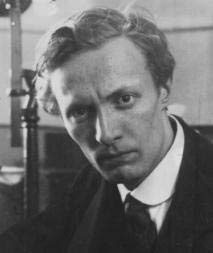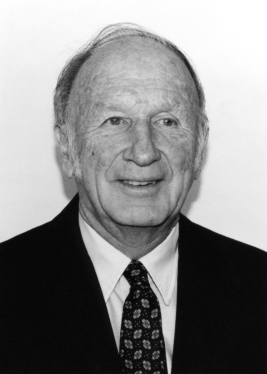Key People and Theories:
 Alan Turing
Alan TuringAlan Mathison Turing, OBE, FRS (23 June 1912 – 7 June 1954), was an English mathematician, logician, cryptanalyst, and computer scientist. He was highly influential in the development of computer science, providing a formalisation of the concepts of "algorithm" and "computation" with the Turing machine, which played a significant role in the creation of the modern computer. Turing is widely considered to be the father of computer science and artificial intelligence.
During the Second World War, Turing worked for the Government Code and Cypher School at Bletchley Park, Britain's codebreaking centre. For a time he was head of Hut 8, the section responsible for German naval cryptanalysis. He devised a number of techniques for breaking German ciphers, including the method of the bombe, an electromechanical machine that could find settings for the Enigma machine. After the war he worked at the National Physical Laboratory, where he created one of the first designs for a stored-program computer, the ACE.
Towards the end of his life Turing became interested in mathematical biology. He wrote a paper on the chemical basis of morphogenesis, and he predicted oscillating chemical reactions such as the Belousov–Zhabotinsky reaction, which were first observed in the 1960s.
Morphogenesis (from the Greek morphê shape and genesis creation, literally, "beginning of the shape"), is the biological process that causes an organism to develop its shape. It is one of three fundamental aspects of developmental biology along with the control of cell growth and cellular differentiation.
The Chemical Basis of Morphogenesis
http://www.dna.caltech.edu/courses/cs191/paperscs191/turing.pdf
 Boris Belousov
Boris BelousovBoris Pavlovich Belousov (19 February 1893, Moscow – 12 June 1970, Moscow) was a Soviet chemist / biophysicist who discovered the Belousov-Zhabotinsky reaction (BZ reaction) in the early 50s. His work initiated the field of modern nonlinear chemical dynamics.
A Belousov–Zhabotinsky reaction, or BZ reaction, is one of a class of reactions that serve as a classical example of non-equilibrium thermodynamics, resulting in the establishment of a nonlinear chemical oscillator. The only common element in these oscillating systems is the inclusion of bromine and an acid. The reactions are theoretically important in that they show that chemical reactions do not have to be dominated by equilibrium thermodynamic behavior. These reactions are far from equilibrium and remain so for a significant length of time. In this sense, they provide an interesting chemical model of nonequilibrium biological phenomena, and the mathematical models of the BZ reactions themselves are of theoretical interest.
Phenomenon known as Chaos
Chaos - a system describe my mathematical equations is more capable of being unpredictable without any outside interference.
Chaos theory is a field of study in mathematics, with applications in several disciplines including physics, economics, biology, and philosophy. Chaos theory studies the behavior of dynamical systems that are highly sensitive to initial conditions, an effect which is popularly referred to as the butterfly effect.
 Edward Norton Lorenz (May 23, 1917 – April 16, 2008) was an American mathematician and meteorologist, and a pioneer of chaos theory. He discovered the strange attractor notion and coined the term butterfly effect.
Edward Norton Lorenz (May 23, 1917 – April 16, 2008) was an American mathematician and meteorologist, and a pioneer of chaos theory. He discovered the strange attractor notion and coined the term butterfly effect.The butterfly effect is the sensitive dependence on initial conditions; where a small change at one place in a nonlinear system can result in large differences to a later state. The effect derives its name from the theoretical example of a hurricane's formation being contingent on whether or not a distant butterfly had flapped its wings several weeks before.
Feedback describes the situation when output from (or information about the result of) an event or phenomenon in the past will influence an occurrence or occurrences of the same (i.e. same defined) event / phenomenon (or the continuation / development of the original phenomenon) in the present or future. When an event is part of a chain of cause-and-effect that forms a circuit or loop, then the event is said to "feed back" into itself.
Feedback loop - the causal path that leads from the initial generation of the feedback signal to the subsequent modification of the event
 Benoît B. Mandelbrot (20 November 1924 – 14 October 2010) was a French American mathematician. Born in Poland, he moved to France with his family when he was a child. Mandelbrot spent much of his life living and working in the United States, and he acquired dual French and American citizenship.
Benoît B. Mandelbrot (20 November 1924 – 14 October 2010) was a French American mathematician. Born in Poland, he moved to France with his family when he was a child. Mandelbrot spent much of his life living and working in the United States, and he acquired dual French and American citizenship.Self-similarity
In mathematics, a self-similar object is exactly or approximately similar to a part of itself (i.e. the whole has the same shape as one or more of the parts). Many objects in the real world, such as coastlines, are statistically self-similar: parts of them show the same statistical properties at many scales. Self-similarity is a typical property of fractals.
A fractal is "a rough or fragmented geometric shape that can be split into parts, each of which is (at least approximately) a reduced-size copy of the whole," a property called self-similarity. Roots of the idea of fractals go back to the 17th century, while mathematically rigorous treatment of fractals can be traced back to functions studied by Karl Weierstrass, Georg Cantor and Felix Hausdorff a century later in studying functions that were continuous but not differentiable; however, the term fractal was coined by Benoît Mandelbrot in 1975 and was derived from the Latin fractus meaning "broken" or "fractured." A mathematical fractal is based on an equation that undergoes iteration, a form of feedback based on recursion. There are several examples of fractals, which are defined as portraying exact self-similarity, quasi self-similarity, or statistical self-similarity. While fractals are a mathematical construct, they are found in nature, which has led to their inclusion in artwork. They are useful in medicine, soil mechanics, seismology, and technical analysis.
 |
| The Thumbprint of God |
 More technically, the Mandelbrot set is the set of values of c in the complex plane for which the orbit of 0 under iteration of the complex quadratic polynomial zn+1 = zn2 + c remains bounded. That is, a complex number, c, is part of the Mandelbrot set if, when starting with z0 = 0 and applying the iteration repeatedly, the absolute value of zn never exceeds a certain number (that number depends on c) however large n gets.
More technically, the Mandelbrot set is the set of values of c in the complex plane for which the orbit of 0 under iteration of the complex quadratic polynomial zn+1 = zn2 + c remains bounded. That is, a complex number, c, is part of the Mandelbrot set if, when starting with z0 = 0 and applying the iteration repeatedly, the absolute value of zn never exceeds a certain number (that number depends on c) however large n gets.Evolution (or more specifically biological or organic evolution) is the change over time in one or more inherited traits found in populations of individuals. Inherited traits are distinguishing characteristics, for example anatomical, biochemical or behavioral, that are passed on from one generation to the next. Evolution occurs when there is variation of inherited traits within a population over time. The major sources of such inherited variants are mutation, genetic recombination and gene flow. Evolution has led to the diversification of all living organisms from a common ancestor, which are described by Charles Darwin as "endless forms most beautiful and most wonderful".
NaturalMotion is a software company with offices in Oxford and San Francisco. Founded in November 2001 as a spin-off of Oxford University, the company specialises in creating animation technology for the game and film industries.
The future will be amazing but highly unpredictable...
Nice documentary <3
ReplyDelete